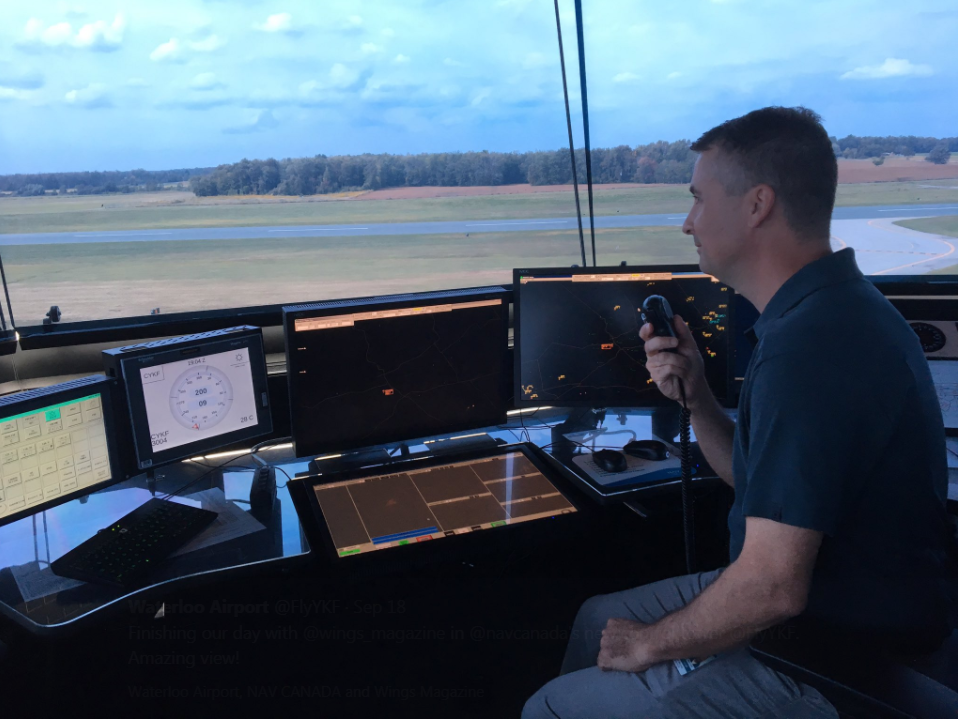
Air traffic controllers recently moved into a new air traffic control tower at the Region of Waterloo International Airport. Work first began in June 2015 on a replacement for the existing tower that was built over 45 years ago.
At 19.4 metres high (63 ft.), the new tower is almost five metres (16 ft.) higher than the previous structure. A larger cab increases controllers’ workspace from the current 24 square metres (260 sq. ft.) to 32 square metres (345 sq. ft.). The four storey building also has an elevator, unlike its predecessor.
The decision to invest in a major project like a new tower is not taken lightly. But buildings have lifecycles, and major repairs to the ventilation systems, plumbing, and roof would have been required on the old facility.
Another important factor in the decision to build a new tower was changes to the airport since the original tower was built in 1969. At the time the tower was situated near the centre of the airport. Since then, runway 08/26 has been extended a further 3,300 feet to the east which put the centre well east of the tower’s location.
The new tower improves controllers’ sightlines to the airport’s runways, taxiways and aprons thanks to its location and additional height. The larger tower cab provides 360-degree views of the airfield, and a much more comfortable, and functional, workspace. Additional office space, a conference room, a lounge, a lunch room and a training classroom are also located in the building.
Relocating air traffic control operations is always a complex undertaking. It is not possible to simply move work stations and equipment. The original facility needed to remain fully operational while the new tower was being built and fit with equipment. Each controller received two days of training in order to get accustomed to the new location. Thanks to the training and some careful coordination the transition has been seamless from the perspective of NAV CANADA’s customers.
Now that the new tower is operational, the old tower will be dismantled this fall. The materials are being recycled and the property on which it once stood will be returned to the airport.



.jpg)
.png)



